What is Solder Cup Power D-Sub Connector?

1.What is the size, current and voltage rating of this connector?
The Solder Cup Power D-Sub Connector is a versatile and reliable connector commonly used in various electronic applications. This type of connector is known for its robust construction and ability to handle high power and signal transmission requirements. Here is a detailed introduction to the Solder Cup Power D-Sub Connector:
Size:
The Solder Cup Power D-Sub Connector is available in standard sizes ranging from 9 to 50 pins. The size of the connector is typically determined by the number of pins or contacts it contains. The dimensions of the connector are designed to fit standard D-Sub connector cutouts, making it compatible with a wide range of devices and equipment.
Current Rating:
The Solder Cup Power D-Sub Connector is capable of handling high current ratings, typically ranging from 5 to 40 Amperes per contact. This makes it suitable for applications that require the transmission of power and signals simultaneously. The connector's design ensures efficient power delivery while maintaining a stable electrical connection.
Voltage Rating:
The Solder Cup Power D-Sub Connector is designed to withstand high voltage levels, with voltage ratings typically ranging from 250 to 600 Volts. This allows the connector to be used in applications where high voltage requirements are essential, such as power distribution systems, industrial machinery, and communication equipment. The insulation properties of the connector help ensure safe and reliable operation even at high voltage levels.
Features:
The Solder Cup Power D-Sub Connector features solder cup contacts that provide a secure and stable connection between the connector and the wires or cables. The solder cups are designed to accommodate a wide range of wire gauges, allowing for flexibility in terms of wire size and compatibility. Additionally, the connector is equipped with metal shells for enhanced durability and protection against electromagnetic interference (EMI).
Applications:
The Solder Cup Power D-Sub Connector is commonly used in industrial automation, telecommunications, power distribution, instrumentation, and data communication applications. Its high current and voltage ratings make it ideal for applications that require the transmission of power signals over long distances. The connector is also suitable for harsh environments thanks to its robust construction and reliable performance.
In conclusion, the Solder Cup Power D-Sub Connector is a versatile and high-performance connector designed to meet the demanding requirements of power and signal transmission applications. With its high current and voltage ratings, durable construction, and compatibility with various wire gauges, this connector is a reliable choice for a wide range of electronic and industrial applications.
2. Are there different socket types to choose from?
The Solder Cup Power D-Sub Connector is available in different socket types to accommodate various wiring configurations and preferences. Here is a detailed to the different socket types available for the Solder Cup Power D-Sub Connector:
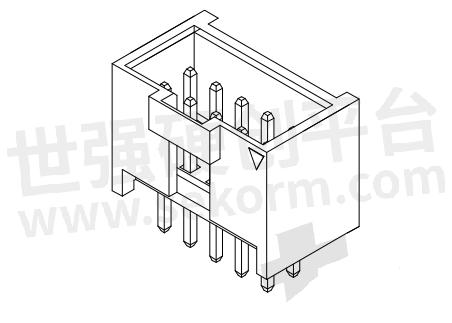
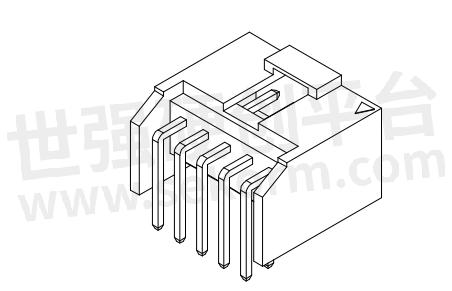
Standard Solder Cups: This is the most common type of socket for the Solder Cup Power D-Sub Connector. It features solder cups that allow wires or cables to be soldered directly onto the connector. This type of socket provides a secure and reliable connection, making it suitable for a wide range of applications.
Insulated Solder Cups: In some applications, it may be necessary to insulate the solder cups to prevent electrical short circuits or to meet specific safety requirements. Insulated solder cups feature a protective insulating material that surrounds the solder cups, providing electrical insulation between contacts. This type of socket ensures proper isolation and prevents accidental contact between adjacent pins.
Screw Terminal Sockets: Screw terminal sockets provide an alternative method for connecting wires or cables to the Solder Cup Power D-Sub Connector. Instead of soldering, wires or cables are secured using screws that clamp onto the stripped ends of the wires. This type of socket is popular for applications where frequent wire changes or connections are required.
IDC (Insulation Displacement Connector) Sockets: IDC sockets offer a convenient and time-saving solution for wire termination. They feature small metal contacts that pierce through the wire insulation, making a reliable electrical connection. IDC sockets eliminate the need for soldering or stripping wire ends, which can save time and reduce the risk of human error during installation.
High-Density Sockets: High-density sockets are designed to accommodate a larger number of pins or contacts in a smaller footprint. These sockets have a higher pin density, allowing for more connections in a limited space. High-density Solder Cup Power D-Sub Connectors are commonly used in applications where space is a premium, such as in aerospace, military, and telecommunications industries.
It's important to note that the availability of different socket types may vary depending on the manufacturer and specific product line. When selecting the Solder Cup Power D-Sub Connector, it is recommended to consult the manufacturer's catalog or datasheet to determine the available socket types and choose the one that best suits your application requirements.
In conclusion, the Solder Cup Power D-Sub Connector offers a range of socket types to accommodate different wiring configurations and installation preferences. Whether you prefer standard solder cups, insulated solder cups, screw terminals, IDC sockets, or high-density sockets, there is a suitable option available to meet your specific needs.
3.Main purposes and application areas
The Solder Cup Power D-Sub Connector is a versatile and widely used connector in various industries and applications. It is designed to provide a secure and reliable connection for power and signal transmission. Here is a detailed introduction to the main purposes and application areas of the Solder Cup Power D-Sub Connector:
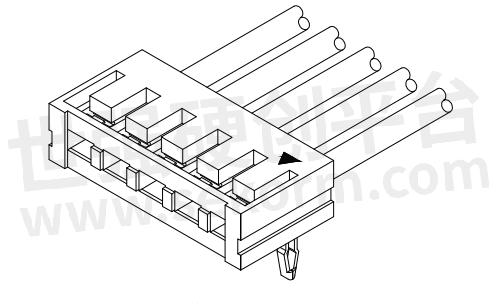

Main Purposes:
Power Transmission: One of the main purposes of the Solder Cup Power D-Sub Connector is to transmit power efficiently and reliably. It is capable of handling high current ratings, typically ranging from 5 to 40 Amperes per contact. This makes it suitable for applications that require the transmission of power, such as power distribution systems, industrial machinery, and power supplies.
Signal Transmission: In addition to power transmission, the Solder Cup Power D-Sub Connector is also used for signal transmission. It provides a stable and secure connection for transmitting signals between devices and components. This makes it ideal for applications that require the transmission of control signals, data signals, and communication signals.
Industrial Automation: The Solder Cup Power D-Sub Connector is widely used in industrial automation applications. It is commonly found in PLCs (Programmable Logic Controllers), motor drives, sensors, and other industrial control systems. Its robust construction, high current and voltage ratings, and reliable performance make it suitable for demanding industrial applications.
Telecommunications: The Solder Cup Power D-Sub Connector is utilized in telecommunications equipment and systems. It is commonly found in networking devices, communication modules, and telecom infrastructure. The connector's ability to handle high current and voltage, coupled with its secure and stable connection, makes it an ideal choice for transmitting signals in telecommunication networks.
Automotive and Transportation: The Solder Cup Power D-Sub Connector is also used in the automotive and transportation industry. It is utilized in various applications such as vehicle wiring systems, engine control units, and electronic control modules. The connector's ability to handle high current and voltage, along with its durable construction, makes it suitable for the demanding environment of automotive and transportation applications.
Aerospace and Defense: The Solder Cup Power D-Sub Connector finds applications in the aerospace and defense sectors. It is commonly used in avionics systems, military equipment, and communication systems. The connector's high reliability, robustness, and ability to handle high current and voltage make it suitable for the stringent requirements of aerospace and defense applications.
In conclusion, the Solder Cup Power D-Sub Connector serves a wide range of purposes and finds applications in various industries. Its ability to handle high current and voltage, along with its reliable performance, makes it a popular choice for power and signal transmission in industrial automation, telecommunications, automotive, aerospace, and defense applications.
4. How durable and reliable is it?
The Solder Cup Power D-Sub Connector is known for its durability and reliability, making it a popular choice for a wide range of applications in various industries. Here is an in-depth introduction to the durability and reliability of the Solder Cup Power D-Sub Connector:
Durability:
The Solder Cup Power D-Sub Connector is constructed using high-quality materials such as metal shells, insulating materials, and solder cups that are designed to withstand mechanical stress, environmental factors, and repetitive use. The metal shells provide robust protection to the internal components of the connector, ensuring its durability in harsh conditions.
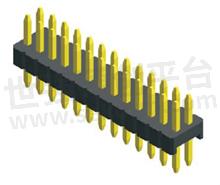
The solder cups of the connector are designed to securely hold the wires or cables in place, even under vibrations or movements. This ensures a stable connection that is resistant to loosening or breakage over time. Additionally, the connector's overall design and construction are engineered to meet industry standards for durability and longevity.
Reliability:
The Solder Cup Power D-Sub Connector is widely recognized for its high reliability in providing consistent and uninterrupted power and signal transmission. The connector's solder cups create a strong and reliable connection between the wires and contacts, minimizing the risk of signal loss or disruptions.
Moreover, the Solder Cup Power D-Sub Connector undergoes rigorous testing and quality assurance processes during manufacturing to ensure that it meets performance standards and specifications. This helps to guarantee its reliability in diverse applications where stable electrical connections are essential.
The connector's ability to handle high current and voltage levels without compromising its performance further enhances its reliability in demanding environments. Whether used in industrial automation, telecommunications, automotive, or aerospace applications, the Solder Cup Power D-Sub Connector is trusted for its consistent performance and reliability.
In conclusion, the Solder Cup Power D-Sub Connector is renowned for its durability and reliability in providing secure and stable connections for power and signal transmission. Its robust construction, high-quality materials, and stringent testing procedures make it a dependable choice for applications that require long-lasting and reliable electrical connections.
5. How does it work?
The Solder Cup Power D-Sub Connector is a versatile and widely used connector that provides a reliable and secure connection for power and signal transmission. Here is a detailed explanation of how it works:
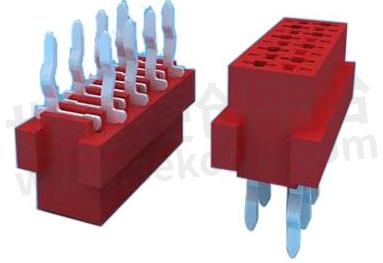
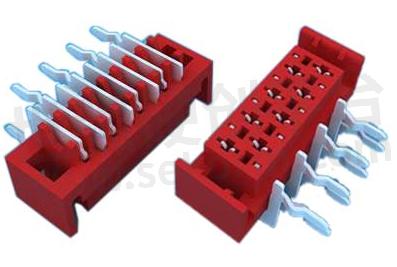
Connector Structure: The Solder Cup Power D-Sub Connector consists of a metal shell, contacts, insulating materials, and solder cups. The metal shell acts as a protective housing for the internal components and provides mechanical strength and durability. The insulating materials, typically made of high-quality plastics, ensure electrical insulation and prevent short circuits between contacts. The solder cups are designed to hold the stripped ends of wires or cables securely. This allows for a strong and reliable connection.
Soldering Process: The solder cups play a crucial role in the functioning of the connector. To create a connection, the wires or cables are stripped of their insulation, and the exposed conductive cores are inserted into the solder cups. The wires are then soldered to the cups using a soldering iron or a specialized soldering machine. The solder forms a permanent bond between the wires and the cups, creating a secure electrical connection.
Contact Design: The Solder Cup Power D-Sub Connector typically features a range of contacts, including power contacts, signal contacts, and ground contacts. These contacts are strategically positioned within the connector to ensure proper alignment and mating with the corresponding contacts in the mating connector. The contacts are made of high-quality materials, such as copper or gold-plated copper, to provide excellent conductivity and minimize signal loss.
Mating and Locking: The Solder Cup Power D-Sub Connector is designed to mate with a compatible connector, which may be another Solder Cup Power D-Sub Connector or a different type of D-Sub Connector. The mating process involves aligning the connectors and applying force to connect them. Once connected, the connectors are secured using locking mechanisms, such as screws or latches, to prevent accidental disconnection.
Power and Signal Transmission: The Solder Cup Power D-Sub Connector is capable of transmitting both power and signals. The power contacts can handle high current and voltage levels, making them suitable for power transmission applications. The signal contacts are designed to provide a reliable connection for transmitting control signals, data signals, and communication signals. The connector's design ensures minimal signal loss and interference, resulting in a stable and high-quality transmission.
In conclusion, the Solder Cup Power D-Sub Connector works by securely connecting wires or cables to the solder cups, creating a reliable electrical connection. Its robust structure, soldering process, contact design, and mating capabilities make it a versatile and efficient solution for power and signal transmission in various industries and applications.
6. How to install and use?
Installing and using a Solder Cup Power D-Sub Connector is a straightforward process that involves a few key steps to ensure a secure and reliable connection for power and signal transmission. Here is a detailed guide on how to install and use a Solder Cup Power D-Sub Connector:
Preparation: Before installing the Solder Cup Power D-Sub Connector, gather all the necessary tools and materials, including the connector itself, wires or cables to be connected, a soldering iron, solder, wire strippers, and any other tools required for the job.
Stripping Wires: Begin by stripping the insulation from the ends of the wires or cables that will be connected to the Solder Cup Power D-Sub Connector. Use wire strippers to carefully remove the insulation, exposing the conductive cores of the wires.
Soldering: Insert the stripped ends of the wires into the solder cups of the connector. Apply heat from a soldering iron to the solder cups and wires while feeding solder into the joint. Ensure that the solder forms a secure bond between the wires and the cups. Be careful not to overheat the connector or apply too much solder, as this can lead to poor connections.
Securing the Connection: Once the wires are soldered to the cups, ensure that the connection is secure and there are no loose wires. Use a multimeter to check for continuity and verify that the connections are properly made.
Mating the Connectors: To use the Solder Cup Power D-Sub Connector, mate it with a compatible connector by aligning the pins or contacts and applying gentle pressure to connect them. Use any locking mechanisms, such as screws or latches, to secure the connection and prevent accidental disconnection.
Testing: After the connectors are mated, test the connection to ensure proper power and signal transmission. Verify that there is continuity between the connected devices and that signals are being transmitted accurately.
Maintenance: Regularly inspect the Solder Cup Power D-Sub Connector for any signs of wear or damage. Clean the connector periodically to remove any dust or debris that may affect its performance. Ensure that the solder joints are intact and re-solder any connections that may have come loose.
In conclusion, installing and using a Solder Cup Power D-Sub Connector involves stripping, soldering, securing, mating, testing, and maintaining the connector to ensure reliable power and signal transmission. By following these steps carefully and ensuring proper installation, you can create a secure and stable connection for your electrical applications.
- +1 Like
- Add to Favorites
Recommend
- What is Coaxial Power D-Sub Solder Cup?
- Problems Needing Attention When Selecting High Current D-sub Connector
- ILME D-SUB Series Connectors for Data-Signal Connection
- Smiths Interconnect’s High-speed D-sub Connectors and Harnesses Helped Ensure Astronaut Safety
- What is Vertical Mount Power D-SUB Connectors?
- Vincotech’s Power Modules‘ Current Carrying Capability of a Standard Solder Able Pin and a Press-fit Pin
- What is IDC D-Sub Connectors ?
- Antenk Electronics Appeared in Guangzhou International Intelligent Manufacturing Exhibition with A Series of High-performance Connector Application Solutions
This document is provided by Sekorm Platform for VIP exclusive service. The copyright is owned by Sekorm. Without authorization, any medias, websites or individual are not allowed to reprint. When authorizing the reprint, the link of www.sekorm.com must be indicated.












































































































































































































































































































































































































































































































































































































































































































































































































































































































































